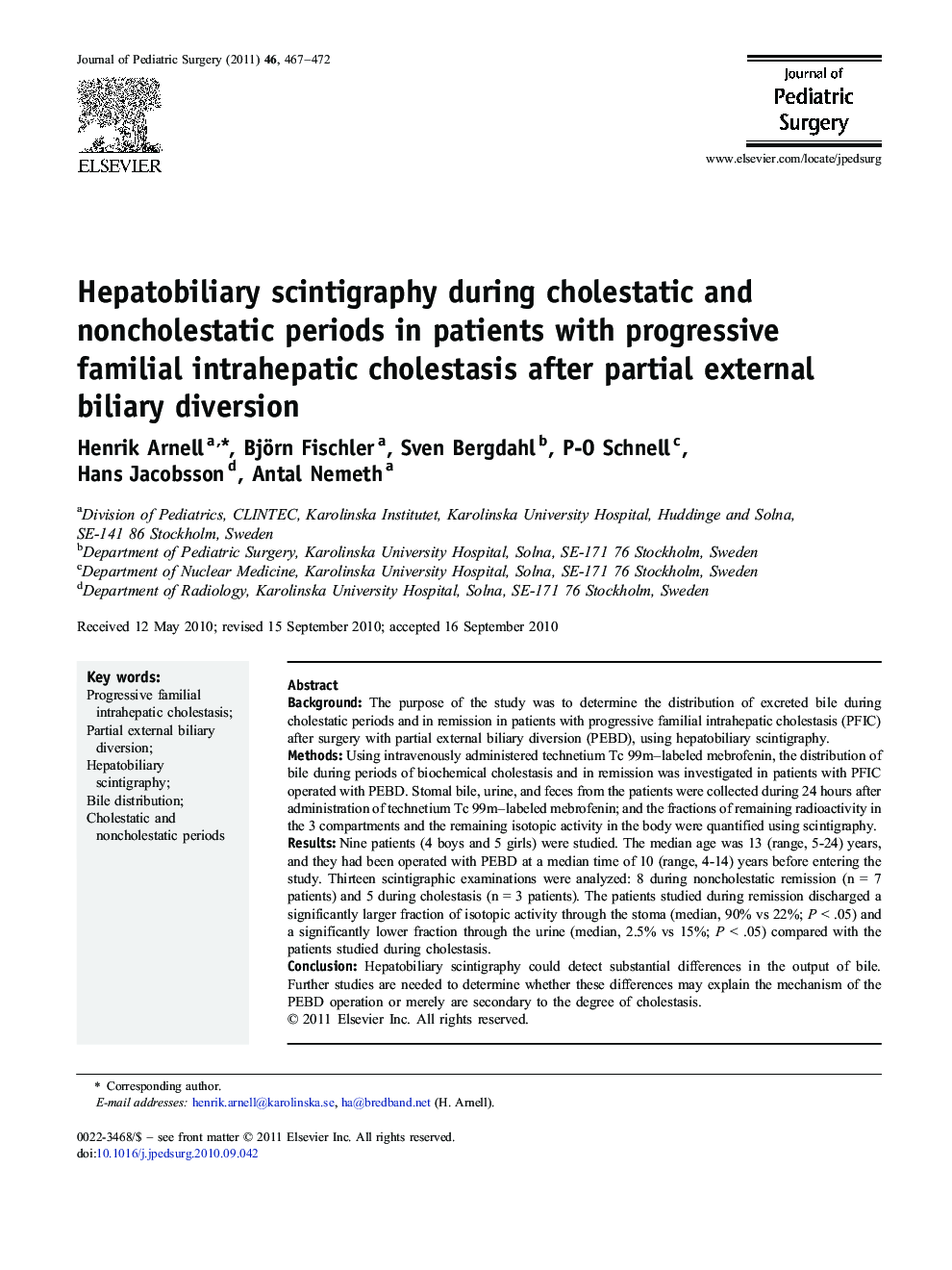| Article ID | Journal | Published Year | Pages | File Type |
|---|---|---|---|---|
| 6218041 | Journal of Pediatric Surgery | 2011 | 6 Pages |
BackgroundThe purpose of the study was to determine the distribution of excreted bile during cholestatic periods and in remission in patients with progressive familial intrahepatic cholestasis (PFIC) after surgery with partial external biliary diversion (PEBD), using hepatobiliary scintigraphy.MethodsUsing intravenously administered technetium Tc 99m-labeled mebrofenin, the distribution of bile during periods of biochemical cholestasis and in remission was investigated in patients with PFIC operated with PEBD. Stomal bile, urine, and feces from the patients were collected during 24 hours after administration of technetium Tc 99m-labeled mebrofenin; and the fractions of remaining radioactivity in the 3 compartments and the remaining isotopic activity in the body were quantified using scintigraphy.ResultsNine patients (4 boys and 5 girls) were studied. The median age was 13 (range, 5-24) years, and they had been operated with PEBD at a median time of 10 (range, 4-14) years before entering the study. Thirteen scintigraphic examinations were analyzed: 8 during noncholestatic remission (n = 7 patients) and 5 during cholestasis (n = 3 patients). The patients studied during remission discharged a significantly larger fraction of isotopic activity through the stoma (median, 90% vs 22%; P < .05) and a significantly lower fraction through the urine (median, 2.5% vs 15%; P < .05) compared with the patients studied during cholestasis.ConclusionHepatobiliary scintigraphy could detect substantial differences in the output of bile. Further studies are needed to determine whether these differences may explain the mechanism of the PEBD operation or merely are secondary to the degree of cholestasis.
